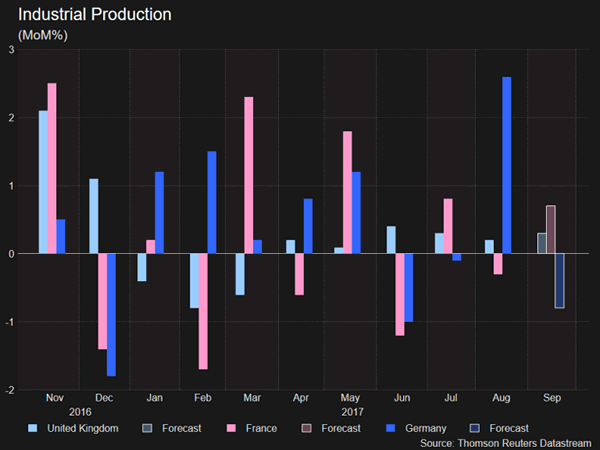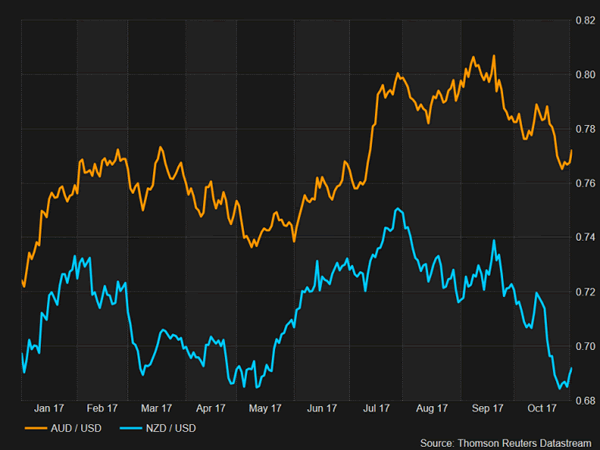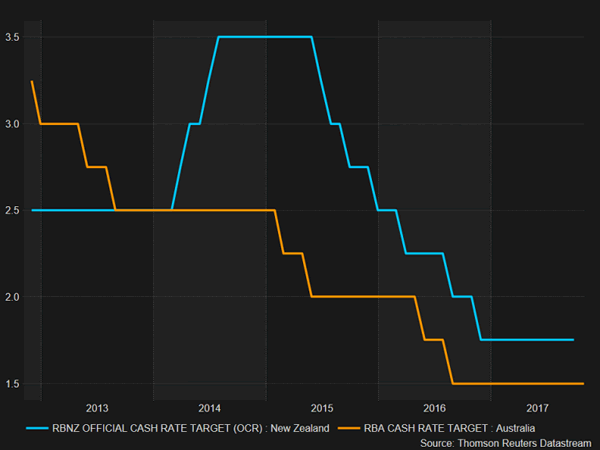The central bank theme will continue for a third week following the past fortnight’s policy meetings by the ECB, Bank of Japan, Fed and the Bank of England. This time, it will be the turn of the Reserve Bank of Australia and the Reserve Bank of New Zealand. Data-wise, the main focus will be on trade and industrial output figures from China, France, Germany, and the United Kingdom, as well as Chinese inflation numbers.
Industrial output and trade data to dominate European calendar
As a stronger euro starts to worry some ECB policymakers, there is little evidence so far that the appreciation in the exchange rate is hurting Eurozone exporters. Industrial production and trade figures due next week should show how German and French manufacturers fared during September when the euro surged above $1.20. Other notable data from the region next week will include Eurozone producer prices, retail sales and the sentix index.
The UK will also see the release of industrial output and trade numbers in the coming week. The manufacturing sector was one of the better performing components of UK GDP in the third quarter, helping the British economy grow a little faster than expected during the period. UK exporters will likely be relieved that this week’s quarter point rate hike by the Bank of Bank didn’t result in fresh gains for the pound. Although, there’s so far been only a negligible reduction in the UK’s massive trade deficit following sterling’s depreciation after the Brexit vote. In fact, the deficit hit a record high in August. It is expected to narrow slightly in September.

Japanese machinery orders and BoJ summary of opinions eyed
The Bank of Japan kept monetary policy unchanged at its meeting this week, but with the last of the hawks now having left the Bank’s board, the discussion appears to be shifting to whether further measures are needed to accelerate the journey towards reaching the 2% inflation target. The summary of opinions of the October meeting, due on Thursday, should provide some insight as to how far the discussions went on the dissenting board member’s view to start targeting the yield on 15-year Japanese government bonds in addition to 10-year ones.
There will also be important data to watch in Japan next week, including machinery orders and wages. Machinery orders, a key gauge of capital expenditure, are expected to decline in September after strong growth in the prior two months. Meanwhile, pay data on Monday should reveal if wage growth gained further momentum in September after some signs of a pick-up in August, in a potential boost for the government’s efforts to raise wages.
China data under spotlight after soft PMIs
PMI data on manufacturing and non-manufacturing activity out of China this week indicated the Chinese economy is slowing going into the fourth quarter of the year. Wednesday’s trade figure will therefore be watched closely for further signs of a slowdown as export and import growth numbers are released. Producer and consumer price data will follow on Thursday. Producer prices jumped to 6.9% year-on-year in September, suggesting strong demand for raw materials. An easing of the producer price index in October could add to concerns that economic growth is moderating in the final three months of the year.
RBA and RBNZ to hold rates amid subdued inflation
The RBA is almost certain to keep its cash rate at 1.5% on Tuesday after inflation in Australia unexpectedly dipped in the third quarter and retail sales had their weakest quarter since 2010. Annual inflation has stood below the RBA’s 2-3% target band for much of the past three years. Concerns about soaring household debt had significantly reduced the RBA’s scope to cut rates below 1.5%, while more recently, persistently low inflation and signs that house price growth is slowing have pushed back expectations of when the Bank will begin to raise rates, with some analysts even predicting that the next move will be down. A stronger Australian dollar has also raised alarms at the RBA. The aussie is up about 6.5% against the greenback so far this year, even after its recent downwards correction. Tuesday’s policy decision will be followed by the RBA’s quarterly monetary policy outlook report on Friday.

Over in New Zealand, the RBNZ will also be holding a policy meeting amid market jitters about the new government’s economic agenda. The decision in October by the kingmaker party, New Zealand First, to partner with Labour instead of the National party led to a sharp sell-off of the kiwi. The New Zealand dollar has slid by almost 5% against its US counterpart since that announcement on worries that the new Labour-led coalition’s policies will harm growth. But there was some relief that the proposed reforms to the RBNZ did not include tampering with the inflation target or the exchange rate.
Next week’s meeting will be the RBNZ’s first with new acting governor Grant Spencer, who was assigned to the role temporarily as the timing of the appointment clashed with the general election in September. However, despite the new leadership at both the central bank and the government, there is unlikely to be a major shift in monetary policy, at least not just yet. This week’s better-than-expected jobs data reminded investors that the fundamentals of the New Zealand economy remain strong even with the slightly lowered growth outlook. Hence, like the RBA, the RBNZ is expected to keep its cash rate unchanged, at 1.75%, and with the odds that the next move will likely be up than down.













